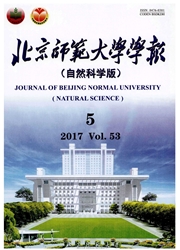

 中文摘要:
中文摘要:
Parameter identification, model calibration, and uncertainty quantification are important steps in the model-building process, and are necessary for obtaining credible results and valuable information. Sensitivity analysis of hydrological model is a key step in model uncertainty quantification, which can identify the dominant parameters, reduce the model calibration uncertainty, and enhance the model optimization efficiency. There are, however, some shortcomings in classical approaches, including the long duration of time and high computation cost required to quantitatively assess the sensitivity of a multiple-parameter hydrological model. For this reason, a two-step statistical evaluation framework using global techniques is presented. It is based on (1) a screening method (Morris) for qualitative ranking of parameters, and (2) a variance-based method integrated with a meta-model for quantitative sensitivity analysis, i.e., the Sobol method integrated with the response surface model (RSMSobol). First, the Morris screening method was used to qualitatively identify the parameters’ sensitivity, and then ten parameters were selected to quantify the sensitivity indices. Subsequently, the RSMSobol method was used to quantify the sensitivity, i.e., the first-order and total sensitivity indices based on the response surface model (RSM) were calculated. The RSMSobol method can not only quantify the sensitivity, but also reduce the computational cost, with good accuracy compared to the classical approaches. This approach will be effective and reliable in the global sensitivity analysis of a complex large-scale distributed hydrological model.
 英文摘要:
英文摘要:
Parameter identification, model calibration, and uncertainty quantification are important steps in the model-building process, and are necessary for obtaining credible results and valuable information. Sensitivity analysis of hydrological model is a key step in model uncertainty quantification, which can identify the dominant parameters, reduce the model calibration uncertainty, and enhance the model optimization efficiency. There are, however, some shortcomings in classical approaches, including the long duration of time and high computation cost required to quantitatively assess the sensitivity of a multiple-parameter hydrological model. For this reason, a two-step statistical evaluation framework using global techniques is presented. It is based on (1) a screening method (Morris) for qualitative ranking of parameters, and (2) a variance-based method integrated with a meta-model for quantitative sensitivity analysis, i.e., the Sobol method integrated with the response surface model (RSMSobol). First, the Morris screening method was used to qualitatively identify the parameters' sensitivity, and then ten parameters were selected to quantify the sensitivity indices. Subsequently, the RSMSobol method was used to quantify the sensitivity, i.e., the first-order and total sensitivity indices based on the response surface model (RSM) were calculated. The RSMSobol method can not only quantify the sensitivity, but also reduce the computational cost, with good accuracy compared to the classical approaches. This approach will be effective and reliable in the global sensitivity analysis of a complex large-scale distributed hydrological model.
 同期刊论文项目
同期刊论文项目
 同项目期刊论文
同项目期刊论文
 期刊信息
期刊信息
